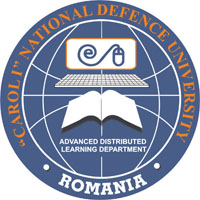TOP 10 - WEB 2.0 TOOLS USEFUL IN TEACHING ACTIVITY
TOP 10 - WEB 2.0 TOOLS USEFUL IN TEACHING ACTIVITY
Author(s): Barnabas Wodala, Teodora Daniela CHICIOREANU, Maria BurceaSubject(s): Education
Published by: Carol I National Defence University Publishing House
Keywords: web 2.0; education; new technologies; top 10 tools; research
Summary/Abstract: For education purposes, web 2.0 can be a means of refreshing the teaching strategy through a new type of teacher-student interaction. Given they provide a virtual space for the users to download and upload information, communicate and relate, the web 2.0 applications may prove to be particularly useful to the educational process. This technology has been adopted by the Romanian educational system because of the lower costs, the easier and faster access to information, the resource access controlthrough the users’ authentication, the public expression of experiences through blogs, wiki, Flickr,and the use of materials combining images and sounds and other forms of social software. The use of technology in the didactic activity enhances the learning process, increases the efficiency and promotes the pupils’ / students’ creativity, collaboration and communication skills. The existing Web 2.0 applications facilitate learning and knowledge exchange, preparing the young people for the future and they bring together people from various places, having the most diverse experiences. They provide teachers, pupils/students and parents with opportunities that should not be wasted, but rather used to their full potential. Given that numerous Web 2.0 applications can be identified in the virtual environment, which can be easily integrated in the educational process, a study was conducted aimed at ranking these applications, in terms of the usefulness and frequency of their use in the teaching activity. This paper presents the results of this study, based on a sample of 82 teachers and 120 students from the "Politehnica" University of Bucharest (Faculty of Computer Science, Faculty of Applied Sciences, Faculty of Electronics, Telecommunications and Information Technology, Faculty of Electrical Engineering and Business Management, Faculty of Electrical Engineering and Faculty of Economics). Moreover, the second part of the paper shows the advantagesand disadvantages of the first 10 applications in this classification, but also how they are implementedin the classroom, information experienced by the authors in the courses and seminars of the Computer Assisted Training Course within the Psychological and Pedagogical Training Module.
Journal: Conference proceedings of »eLearning and Software for Education« (eLSE)
- Issue Year: 11/2015
- Issue No: 03
- Page Range: 172-179
- Page Count: 8

